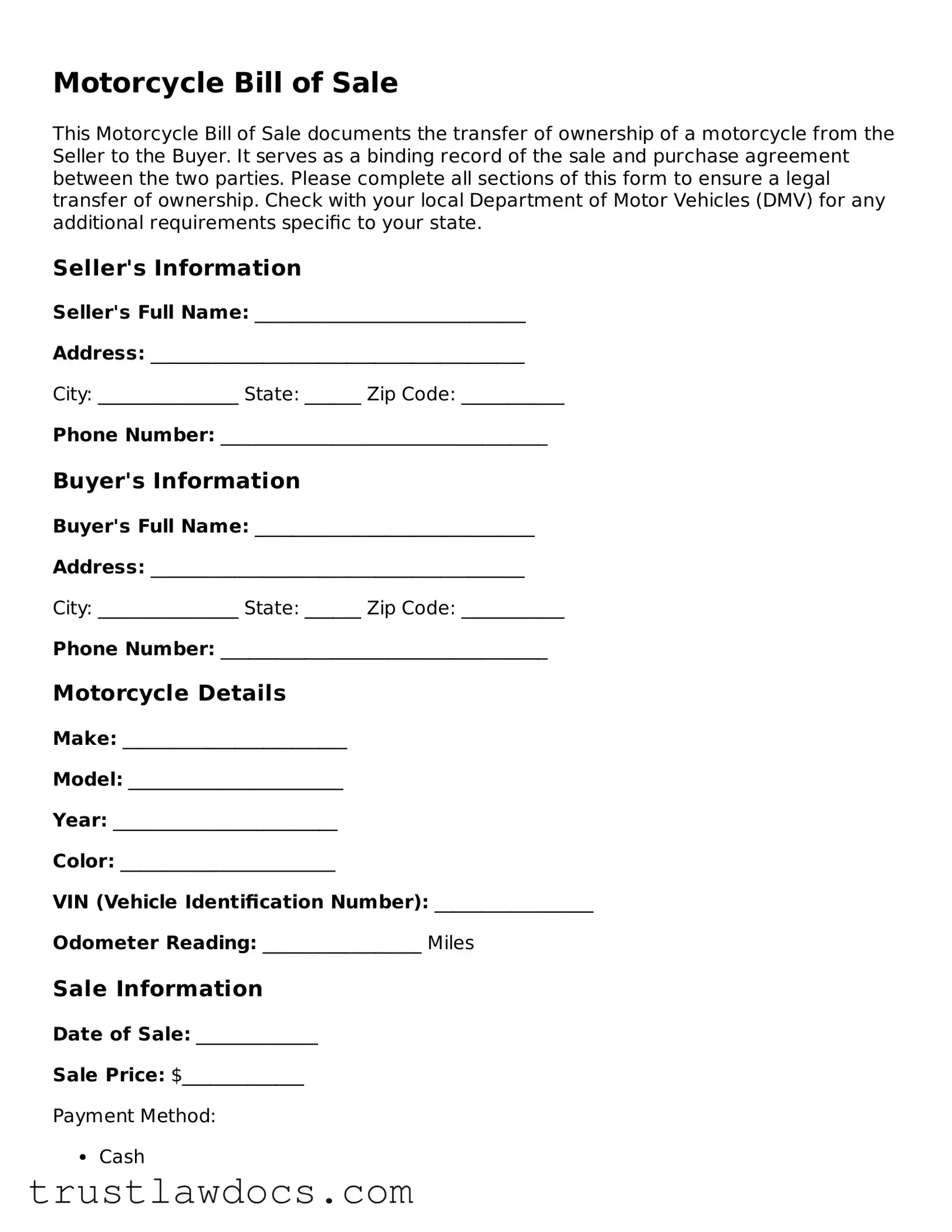Motorcycle Bill of Sale
This Motorcycle Bill of Sale documents the transfer of ownership of a motorcycle from the Seller to the Buyer. It serves as a binding record of the sale and purchase agreement between the two parties. Please complete all sections of this form to ensure a legal transfer of ownership. Check with your local Department of Motor Vehicles (DMV) for any additional requirements specific to your state.
Seller's Information
Seller's Full Name: _____________________________
Address: ________________________________________
City: _______________ State: ______ Zip Code: ___________
Phone Number: ___________________________________
Buyer's Information
Buyer's Full Name: ______________________________
Address: ________________________________________
City: _______________ State: ______ Zip Code: ___________
Phone Number: ___________________________________
Motorcycle Details
Make: ________________________
Model: _______________________
Year: ________________________
Color: _______________________
VIN (Vehicle Identification Number): _________________
Odometer Reading: _________________ Miles
Sale Information
Date of Sale: _____________
Sale Price: $_____________
Payment Method:
- Cash
- Check
- Other: _________________
Agreement
By signing below, both Buyer and Seller confirm the accuracy of the information provided in this document and agree to the sale of the motorcycle described under the terms and conditions stated. This bill of sale is executed without reliance upon any warranty or representation by the Seller, except as specifically provided herein.
Seller's Signature: _______________________ Date: _________
Buyer's Signature: ________________________ Date: _________
Notarization (If required by your state)
This section to be completed by a notary public.
State of _______________
County of _____________
On the ______ day of ______________, 20__, before me, ___________________________________ a notary public, personally appeared _____________________________ known to me (or satisfactorily proven) to be the person(s) whose name(s) is/are subscribed to the within instrument and acknowledged that he/she/they executed the same for the purposes therein contained.
In witness whereof, I hereunto set my hand and official seal.
Notary's Signature: ________________________ Date: _________
Notary's Seal:
